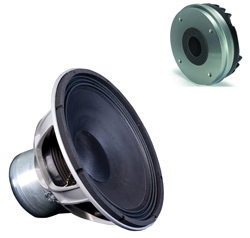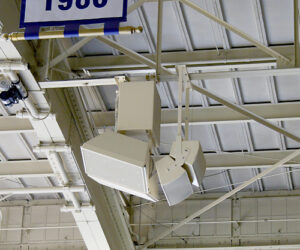Once upon a time, most sound companies had a wood shop for building loudspeakers as well as road cases.
These days, superior off-the-shelf loudspeakers employ high tech transducers. Indeed, some of the most advanced drivers are not for sale to the general public outside of the products that enclose them.
Adamson Systems, JBL Professional and Meyer Sound have developed proprietary transducer technology that can only be owned though purchase of their loudspeaker systems, but we won’t be covering those products.
The products in this feature are both available to the end user, and found in manufactured systems. It’s still possible for those with the time, tools and skills to take on the relatively straightforward task of building their own subwoofers or two-way enclosures.
The most widely seen floor monitor on television is ATK AudioTek’s gray carpet-covered single-12 M2 wedge, designed by ATK’s Scott Harmala.
Let’s Get Small
Half a century ago, Australians Neville Thiele and Richard Small pioneered the electromechanical parameters that define the low-frequency performance of woofers.
Several manufacturers provide loudspeaker plans or cabinet design software, taking the guesswork out of making custom enclosures.
Free Air Resonance (Fs) is the frequency at which the weight of the woofer’s moving parts equals the force of the speaker suspension when in motion. Below this frequency, the driver is less efficient and uncontrolled motion can result in mechanical damage.
Sensitivity, generally quoted as the sound in decibels (dB) produced by one watt of power at one meter, shows how much output is created by a given signal.
A driver with 3 dB less sensitivity requires twice the power to produce the same output. A woofer with 96 dB sensitivity and 500 watts power handling will get as loud as a 1,000-watt driver with 93 dB sensitivity using twice the power.
















